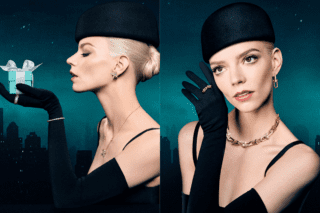This website uses cookies so that we can provide you with the best user experience possible. Cookie information is stored in your browser and performs functions such as recognising you when you return to our website and helping our team to understand which sections of the website you find most interesting and useful.
Beautiful Strangers: Inside the global art extravaganza of Venice Biennale 2024
By Stephanie Gavan | 15 October 2024 | Arts, Travel
We head to the Venice Biennale to discover the foreign affairs and celebration of the global diaspora infusing the global art spectacle
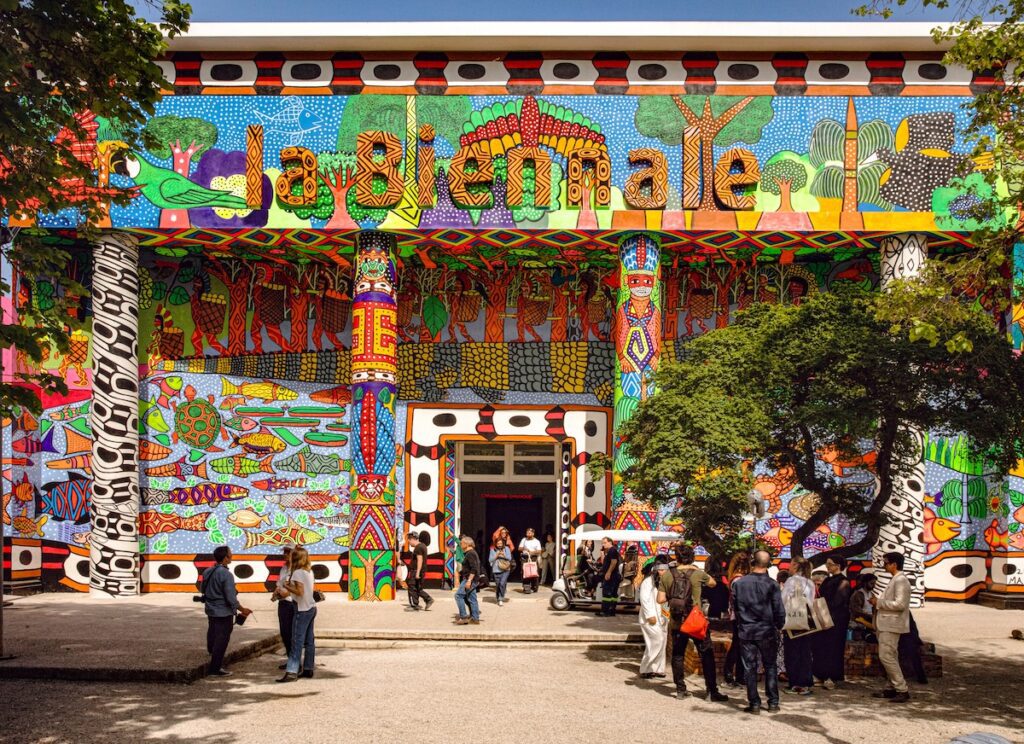 Every two years, Venice becomes a stage for the contemporary art world. Countries come together – not just to showcase the work of their best and brightest — but to grapple with pressing current affairs. This year’s La Biennale Arte show, titled Stranieri Ovunque — which translates to Foreigners Everywhere – marks the 60th edition of the global art fair and seeks to explore issues of belonging, borders, dislocation and displacement.
Every two years, Venice becomes a stage for the contemporary art world. Countries come together – not just to showcase the work of their best and brightest — but to grapple with pressing current affairs. This year’s La Biennale Arte show, titled Stranieri Ovunque — which translates to Foreigners Everywhere – marks the 60th edition of the global art fair and seeks to explore issues of belonging, borders, dislocation and displacement.
“Wherever you go and wherever you are you will always meet foreigners.. you too are — or have been — foreign to something or someone,” says Adriano Pedrosa, this year’s guest curator, who is breaking records not only with his unconventional curatorial approach but also by virtue of being the first Latin American curator in the international exhibition’s 129-year-long history.
Split across two main city sites — the Giardini and Arsenale — and comprising more than 75 national pavilions as well as a central themed exhibition, the show runs until 24 November. Here, we take a look at this year’s must-see works and collateral exhibitions to keep you in the frame.
THE CENTRAL EXHIBITION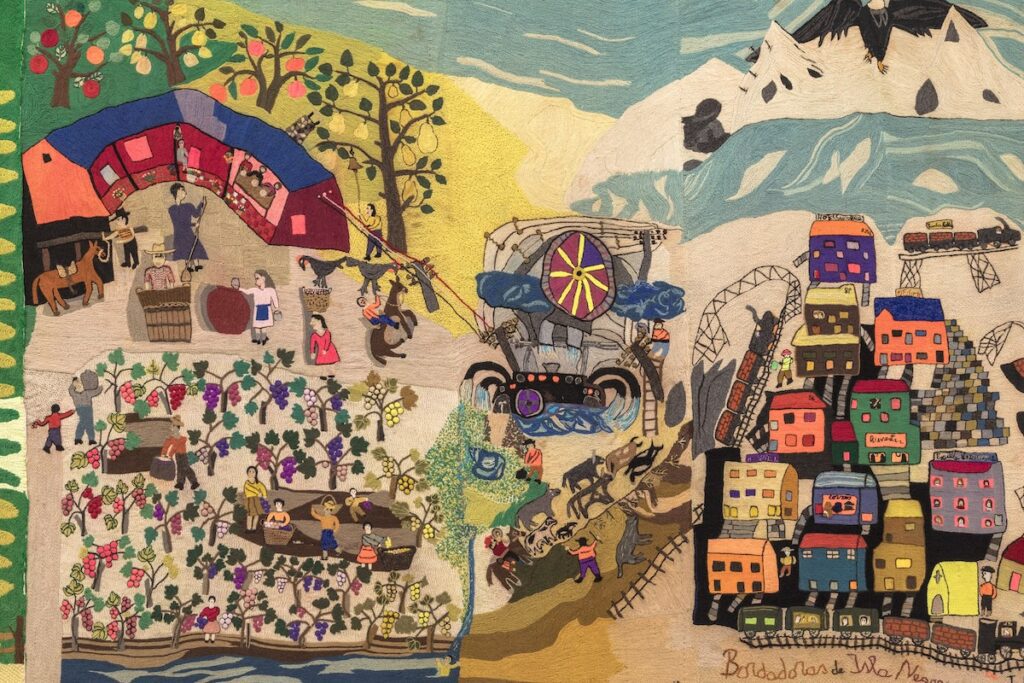 Inspired by the Palermo collective Claire Fontaine, the Biennale’s central exhibition asks: In a world of increasing displacement and shifting identities, what does it mean to be a foreigner?
Inspired by the Palermo collective Claire Fontaine, the Biennale’s central exhibition asks: In a world of increasing displacement and shifting identities, what does it mean to be a foreigner?
The exhibition is split into halves; the Nucleo Storico and the Nucleo Contemporaneo. The former highlights the work of 20th-century artists from Latin America, Africa, the Middle East and Asia and, in doing so, challenges the Eurocentric narrative of the modernist movement.
Rooms of salon-style glass displays show abstract art and portraiture from artists whose work — by way of geography — has often been excluded from the art historical canon. In the portraits section, look out for Bhupen Khakhar’s oil painting Fishermen in Goa, which was one of the first Indian paintings to address societal attitudes to homosexuality.
Related: Read Tempus Magazine’s summer issue starring Sir Ridley Scott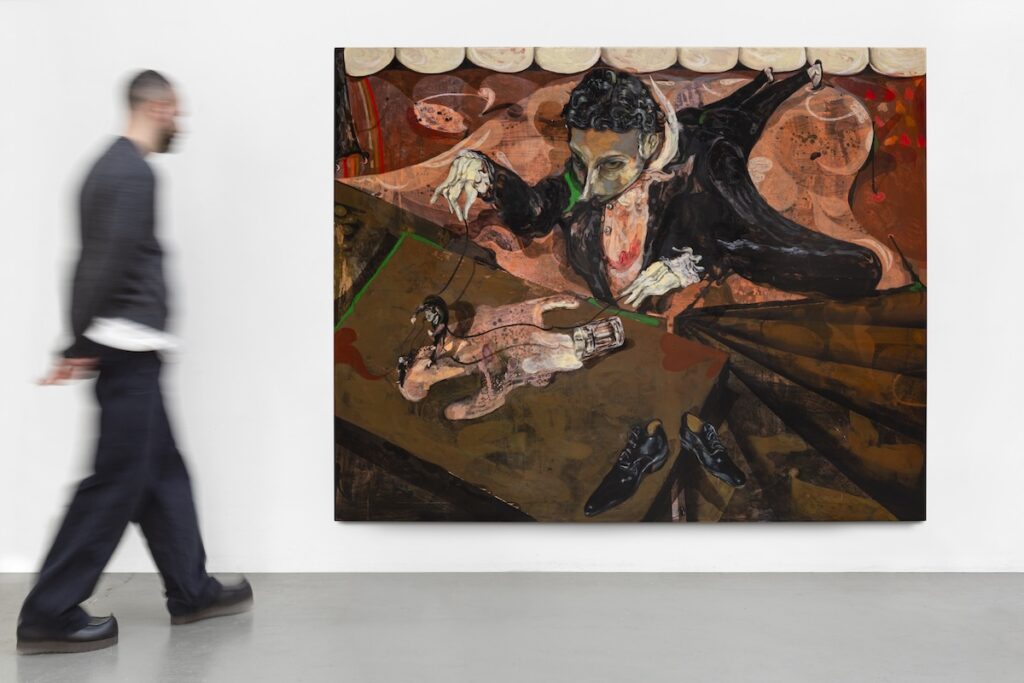 Meanwhile, in Abstractions, Ione Saldanha’s ‘Bambus’ features a herd of painted bamboo trunks that dangle from the ceiling to form a meditative melody of colour. In a third room dedicated to the global Italian diaspora of the 20th-century, make a beeline for Domenico Gnolis ‘Sous la Chaussure – a painting of a shoe made strange through enlargement – which despite being painted in 1967, remains refreshingly contemporary.
Meanwhile, in Abstractions, Ione Saldanha’s ‘Bambus’ features a herd of painted bamboo trunks that dangle from the ceiling to form a meditative melody of colour. In a third room dedicated to the global Italian diaspora of the 20th-century, make a beeline for Domenico Gnolis ‘Sous la Chaussure – a painting of a shoe made strange through enlargement – which despite being painted in 1967, remains refreshingly contemporary.
In the Nucleo Contemporaneo, River Claure’s magical-realist photographs reimagine French author Antoine de Saint-Exupéry’s novella The Little Prince as an Aymara fairy tale, while Pablo Delano’s ‘The Museum of the Old Colony’ tells the tale of Puerto Rico’s complex social and economic history through documentary-style films, archive photos and objects. Louis Fratino’s neo-cubist paintings are some of the most tender pieces in this section, portraying quiet scenes of queer domesticity.
But curator Adriano also uses this opportunity to spotlight living artists working outside of the institutional art world. One stellar example is Bordadoras de Isla Negra, a Chilean sewing collective, whose expansive and intricate embroidered tapestry depicting life in a Chilean coastal town disappeared in 1973, after the Pinochet dictatorship had taken over the building it was housed in, and was not returned until 2019.
NATIONAL PAVILIONS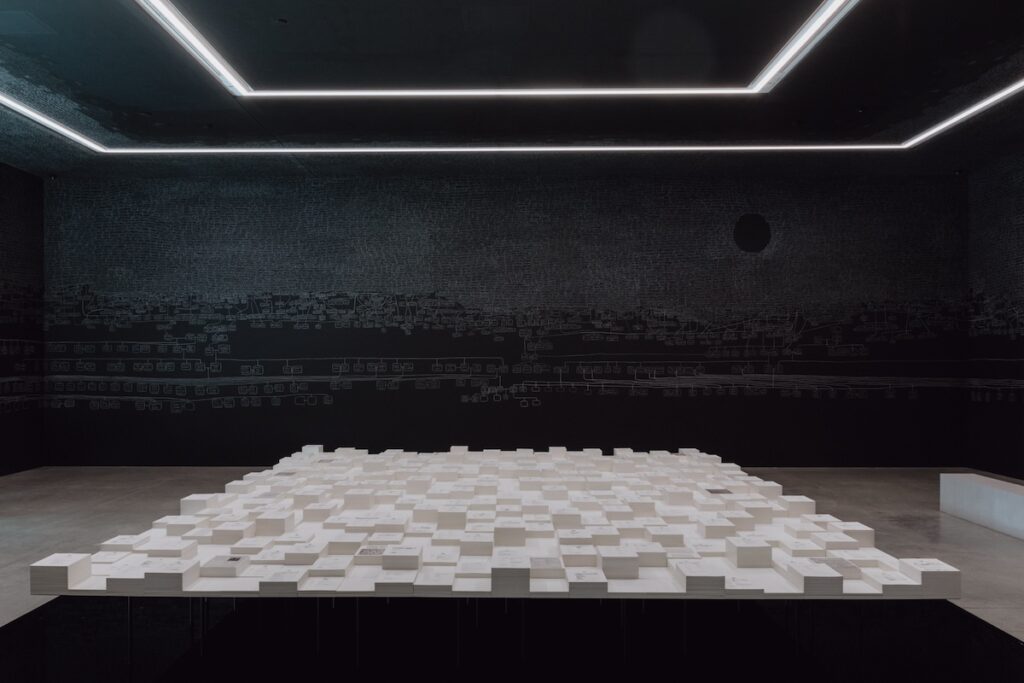 There’s a lot to celebrate this year in what may well be the Biennales most diverse edition to date but, as many of the included works seem to stress, there’s still significant progress to be made.
There’s a lot to celebrate this year in what may well be the Biennales most diverse edition to date but, as many of the included works seem to stress, there’s still significant progress to be made.
This year’s Golden Lion Award (a prestigious award for the best national participation) goes to Archie Moore, who is representing Australia with his touching memorial-installation Kith and Kin (right). In a dark room, chalk rises up the walls and across the ceiling, tracing the trajectory of his First Nation relations over a 65,000-year span. Beneath them, stacks of redacted coronial reports, documenting the Indigenous Australians who have died in police and prison custody.
Expect queues at the German pavilion, where Ersan Mondtag re-stages the life of his Turkish grandfather — an immigrant in Germany who died from asbestos poisoning as a result of poor working conditions — through a series of intensely claustrophobic, dust-carpeted rooms.
Related: The art of champagne – How the drink influenced artists throughout history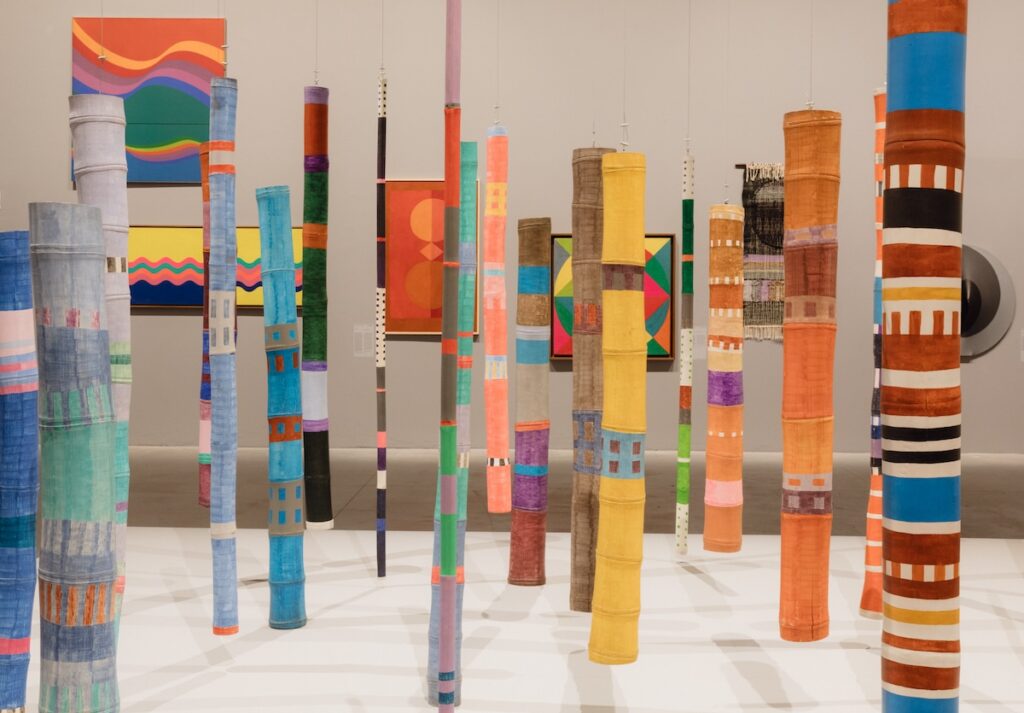 But, despite the serious subject matter, not all exhibitions are quite so sombre.
But, despite the serious subject matter, not all exhibitions are quite so sombre.
Denmark uses its pavilion to host Greenlandic artist Inuuteq Storch, whose evocative photos offer insight into the country’s unique way of life, and the nuanced lives of young people living here – snapshots of boredom, rebellion, longing and despair.
The Irish pavilion is another highlight, represented by Eimear Walshe, who muddles visual cues (gimp masks, peasant garments, smart phones and building sites) to mine the country’s complicated – and, as Eimear points out, often intertwined – relationship to sexuality, property and state.
In the French pavilion, Julien Cruzet’s under-the-sea sculptures recall his childhood on the beaches of Martinique while, across the way, Japan’s Yuko Mohri presents a bricolage of playful kinetic sculptures fashioned from domestic objects – both worthy of a visit. Don’t miss Wael Shawky’s operatic parable in the Egyptian pavilion, either, which tells a story of anti-colonial uprising in the style of a surreal musical.
COLLATERAL EVENTS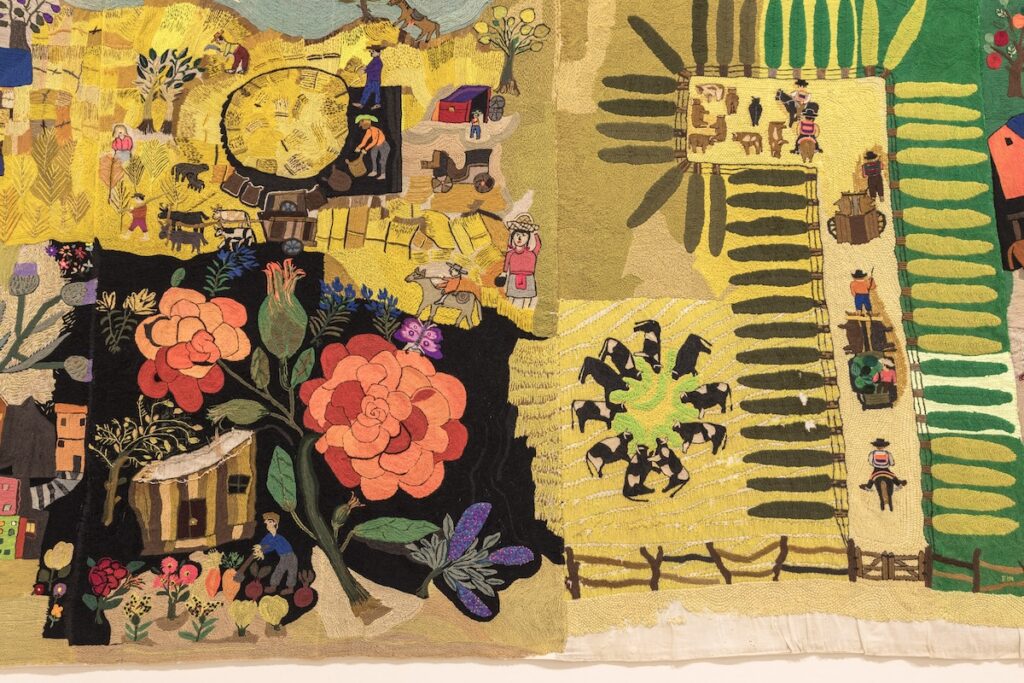 Your creative cruising needn’t come to an end when you reach the Biennale’s exit gate, with a number of independently organised collateral events that set up shop in the city’s churches, empty spaces and permanent galleries for the duration of the festival. One of the most spectacular extra-curricular shows this year takes place at the Pinault Foundation’s Punta Della Dogana, where French artist Pierre Huyghe presents his major new exhibition Liminal.
Your creative cruising needn’t come to an end when you reach the Biennale’s exit gate, with a number of independently organised collateral events that set up shop in the city’s churches, empty spaces and permanent galleries for the duration of the festival. One of the most spectacular extra-curricular shows this year takes place at the Pinault Foundation’s Punta Della Dogana, where French artist Pierre Huyghe presents his major new exhibition Liminal.
In a series of gloomy rooms, Pierre stages a number of uncanny interventions – an aquarium where hermit crabs use replicas of modernist sculptures as their shells; AI-generated stage lights and smoke machines who perform’ to an eerie soundtrack; or a video of a monkey hanging-out in Fukushima’s long-abandoned spaces while wearing an uncanny mask of a human girl.
At Fondazione Prada, Christoph Büchel’s controversial show sees the 18th-century palazzo transformed into a bankrupt pawn shop to interrogate how debt is used as a lever of control and exploitation. For this, the artist has created a new cryptocurrency called Schei, which is promoted by a fake TikTok influencer, with profits sought to be redistributed among Venice’s permanent residents.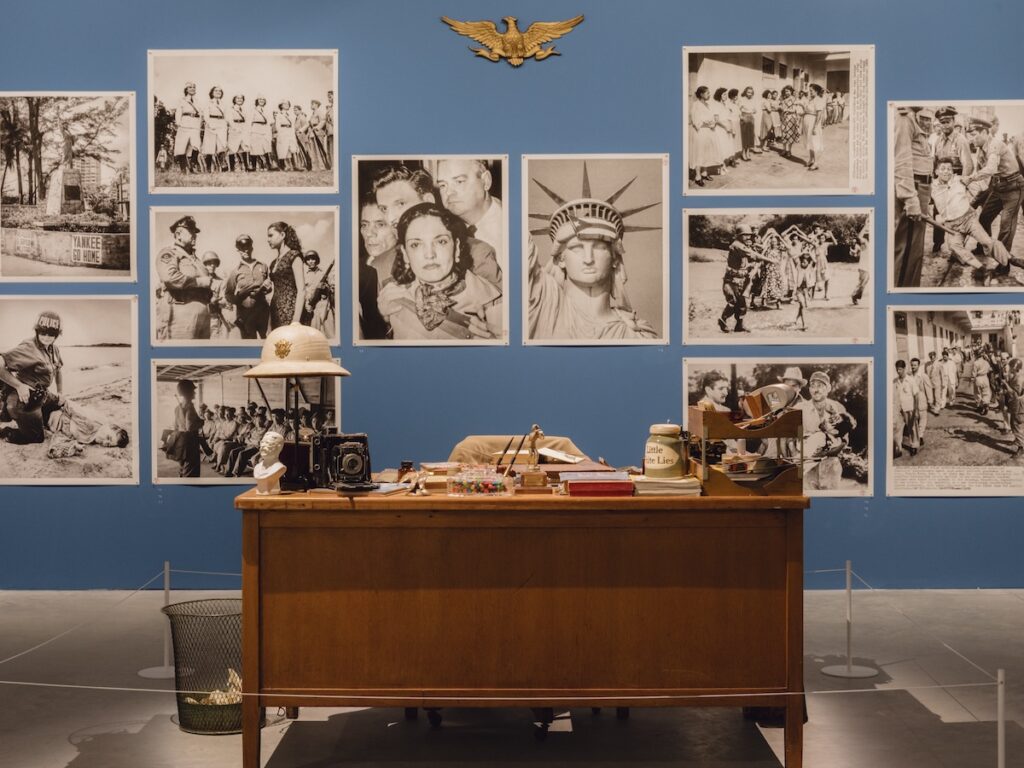 Don’t miss Portraits of Life and Death, a series of black-and-white photographs which contrast the mummified bodies of the catacombs with portraits of his peers from New York’s downtown scene during the ’70s and ’80s.
Don’t miss Portraits of Life and Death, a series of black-and-white photographs which contrast the mummified bodies of the catacombs with portraits of his peers from New York’s downtown scene during the ’70s and ’80s.
Guglielmo Castelli’s show Improving Songs for Anxious Children brings together painting, textiles and sculpture that dance between innocence and violence. Over on the island of San Giorgio, Berlinde De Bruvckere’s faceless angels (made from unconventional materials like wax, animal skins, and hair), are scattered across the abbey of San Giorgio Maggiore in a striking reflection on mortality, transcendence and devotion.
Finally, one of the most poignant shows of this year’s Biennale is hosted by Giudecca’s women’s prison on behalf of the Vatican pavilion and is full of disquieting works made by artists including Maurizio Cattelan, Simone Fattal and Sonia Gomes in collaboration with inmates.





